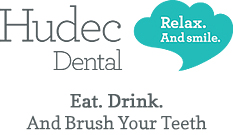With the Halloween spirit in the air and with October being National Orthodontic Health Month, it was only appropriate to use this month’s blog to raise awareness about the dangers of DIY braces. In fact, some of the scariest stories can be the result of Do It Yourself (DIY) braces, or, how I prefer calling them, Don’t Do It to Yourself (DDIY) braces. So, let’s review some facts and then ask ourselves; Trick or Treat?!
When it comes to growing up, braces are almost part of the deal. Furthermore, the percentage of adults seeking a straighter smile increases steadily and drastically, over the years. As already discussed in one of our previous blogs, a perfect smile can mean a lot; studies show it affects job opportunities, people’s perception, and so much more. No one should say that orthodontic work is quick, easy or inexpensive. Expertise in this area requires knowledge of the biology of your teeth and the physics of moving them. At the same time, creating the “perfect” smile has the nuance of an art form.
Be a patient, not a consumer!
Studies show that there is a growing distrust of expertise in all scientific fields. In fact, “eight in 10 Americans believe science has made life better for most people, but they still don’t trust scientists — and/or aren’t aware of their consensus — on many of the most important science-related issues of the day”. From climate change, GMOs, all the way to Dentistry and Orthodontics, there are big gaps between the attitudes of scientists and the public. Given the cost involved with orthodontic treatment, the growing distrust of expertise, the growing trust in YouTube DIY videos, and the rising popularity of DIY 3D printing, it’s unsurprising that DIY braces are becoming more and more popular and are highly advertised.
What is DIY orthodontic treatment?
DIY orthodontic treatment is any type of treatment that is performed without the direct supervision of a licensed specialist.
What are the different versions of DIY braces?
- Doing your own braces at home through “How-To” YouTube videos.
- Doing your own clear aligners at home, through companies that walk you through the steps.
- Using elastic hair bands to close gaps between your teeth.
What is the process for DIY aligners?
Several companies will help you do DIY treatment; SmileDirectClub, Candid, Crystal Braces are some of them.
The process is as follows;
For a small initial fee, the “patient” receives a kit with instructions on how to take their own dental impressions and upload photos of their teeth using a smartphone. Consumers are also asked to sign a pledge that they have seen a dentist and had X-rays taken. While neither of these companies asks to see the X-ray images, a dentist on staff determines if the case is suitable for treatment, with aligners, at an additional cost, which – admittedly – remains small.
Can DIY aligners treat or do they just trick?
In simple cases, some patients will achieve benefits. Will this type of treatment address important issues regarding the bite relationship or the health of the jaw joints and gums, as it relates to the orthodontic problem? No, it cannot. It behooves the patient to determine what is right for themselves first by seeking a complete diagnosis from an orthodontic specialist. Bypassing the doctor results in the patient making decisions about their care based only on what they perceive as important – not what is medically appropriate. Only a trained and certified orthodontist has the knowledge to determine what is best for a patient.
While SmileCareClub and Crystal Braces do provide email and phone support, no one is there to personally monitor and carefully determine key factors in a patient’s case; how well the patient’s teeth are fitting together; if teeth are getting too loose or colliding traumatically with opposing teeth; or how to remedy any situation that would require more advanced care. The doctor-patient relationship that is so crucial to proper care is being reduced, if even existent, to the minimum. Trick or treat?
What about closing gaps with rubber bands?
Does it work? Yes. Will the teeth stay in place? Not likely. Teeth that are moved quickly need to be retained with a retainer, so that the result will be stable. Furthermore, elastics tend to cause teeth to tip toward one another rather than moving in a more parallel fashion. This also is a cause of relapse.
The most concerning aspect, though, is the danger of losing/forgetting the rubber band under the gum line. If a patient slips a rubber band between teeth in an improper manner, it could slide under the gum line and lead to loss of those teeth. Yes, a forgotten elastic could lead to the loss of healthy teeth. Trick or treat?
DIY Beware!
Just because a consumer could straighten their own teeth doesn’t mean that they should. There is a legitimate reason why orthodontists acquire seven years of post-college education to become experts at the science and art of orthodontics. It is naïve to think that such qualifications can be matched by an “ortho-by-mail” and without supervision process. DIY orthodontics could cause permanent damage to teeth, such as root shortening, bone or tooth loss, tooth decay or other serious problems.
In the never-ending pursuit to reduce health care costs, new solutions are brought to the marketplace. Creativity and innovation fuel technological advances, which brings value to healthcare. Unfortunately, the DIY orthodontic treatment “dumbs down” a process that requires an expert’s evaluation and monitoring.
Our minds are a battle between good and bad ideas; we are whatever side wins the battle. Will you be tricked or treated?
Taking care of your smile should be important. Let us be part of the team that gives you a smile you can trust and believe in!
Do you have questions about how to best take care of your braces? We can answer your questions to keep your teeth and gums healthy – schedule a free consultation! Contact us or call 216-325-0822!







